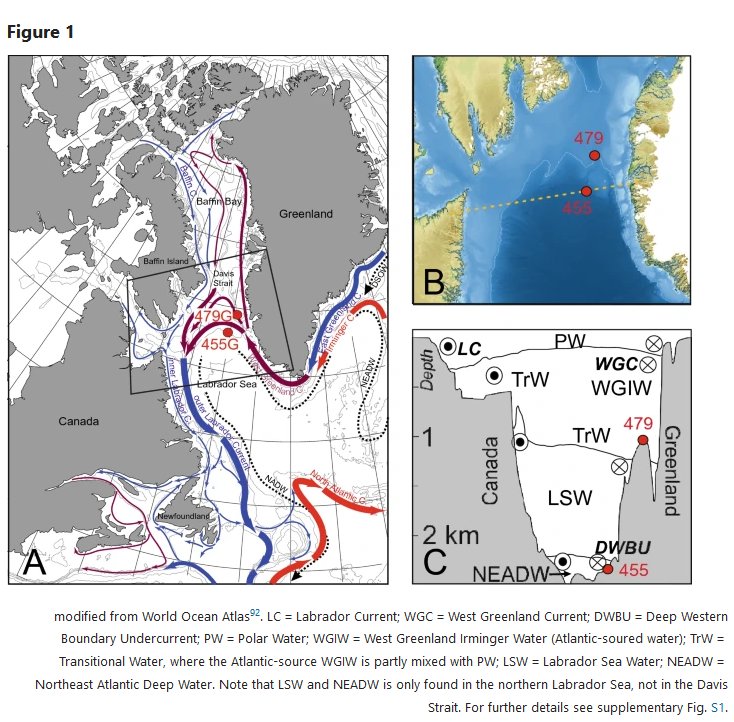Evidence for influx of Atlantic water masses to the Labrador Sea during the Last Glacial Maximum
New publication by Marit-Solveig Seidenkrantz, Antoon Kuijpers, Steffen Aagaard-Sørensen, Holger Lindgreen, Jesper Olsen & Christof Pearce

Abstract:
The Last Glacial Maximum (LGM, 23–19,000 year BP) designates a period of extensive glacial extent and very cold conditions on the Northern Hemisphere. The strength of ocean circulation during this period has been highly debated. Based on investigations of two marine sediment cores from the Davis Strait (1033 m water depth) and the northern Labrador Sea (2381 m), we demonstrate a significant influx of Atlantic-sourced water at both subsurface and intermediate depths during the LGM. Although surface-water conditions were cold and sea-ice loaded, the lower strata of the (proto) West Greenland Current carried a significant Atlantic (Irminger Sea-derived) Water signal, while at the deeper site the sea floor was swept by a water mass comparable with present Northeast Atlantic Deep Water. The persistent influx of these Atlantic-sourced waters entrained by boundary currents off SW Greenland demonstrates an active Atlantic Meridional Overturning Circulation during the LGM. Immediately after the LGM, deglaciation was characterized by a prominent deep-water ventilation event and potentially Labrador Sea Water formation, presumably related to brine formation and/or hyperpycnal meltwater flows. This was followed by a major re-arrangement of deep-water masses most likely linked to increased overflow at the Greenland-Scotland Ridge after ca 15 kyr BP.
